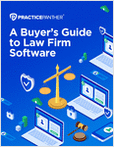When the U.S. Patent and Trademark Office proposed in early June to allow a three-track system for processing patent applications, most of the attention was focused on the aspect that would provide a fast track for prosecution aimed at reducing application pendencies from several years to 12 months. Many applicants and potential applicants have complained that the typical experience of waiting three or four years to get even the first substantive response from a patent examiner, and then two more years to actually get the application allowed, eliminated much of the benefit of patenting their inventions. Less notice was taken of a second part of the proposal: to allow applicants to select a processing track that would delay regular processing of the application for an additional 2 1/2 years. Should the proposal be implemented, it may well be that the slow-track aspect has the greatest impact on our patent system.
Since David Kappos became the new PTO director a year ago, he has tried to focus on a perennial complaint about PTO backlogs being unacceptably long. Never mind the root of the problem — that the PTO is set up to be self-funding but Congress maintains a long-standing practice of diverting PTO-generated fees for other purposes — industry simply does not accept the notion that it can take half a decade or more to work a patent application through the office. Traditionally, applicants have been able to petition to make a case “special” in order to qualify for expedited processing, but there are a number of strings attached that make this approach unattractive even for the limited number of applicants who qualify.
This content has been archived. It is available through our partners, LexisNexis® and Bloomberg Law.
To view this content, please continue to their sites.
Not a Lexis Subscriber?
Subscribe Now
Not a Bloomberg Law Subscriber?
Subscribe Now
LexisNexis® and Bloomberg Law are third party online distributors of the broad collection of current and archived versions of ALM's legal news publications. LexisNexis® and Bloomberg Law customers are able to access and use ALM's content, including content from the National Law Journal, The American Lawyer, Legaltech News, The New York Law Journal, and Corporate Counsel, as well as other sources of legal information.
For questions call 1-877-256-2472 or contact us at [email protected]




